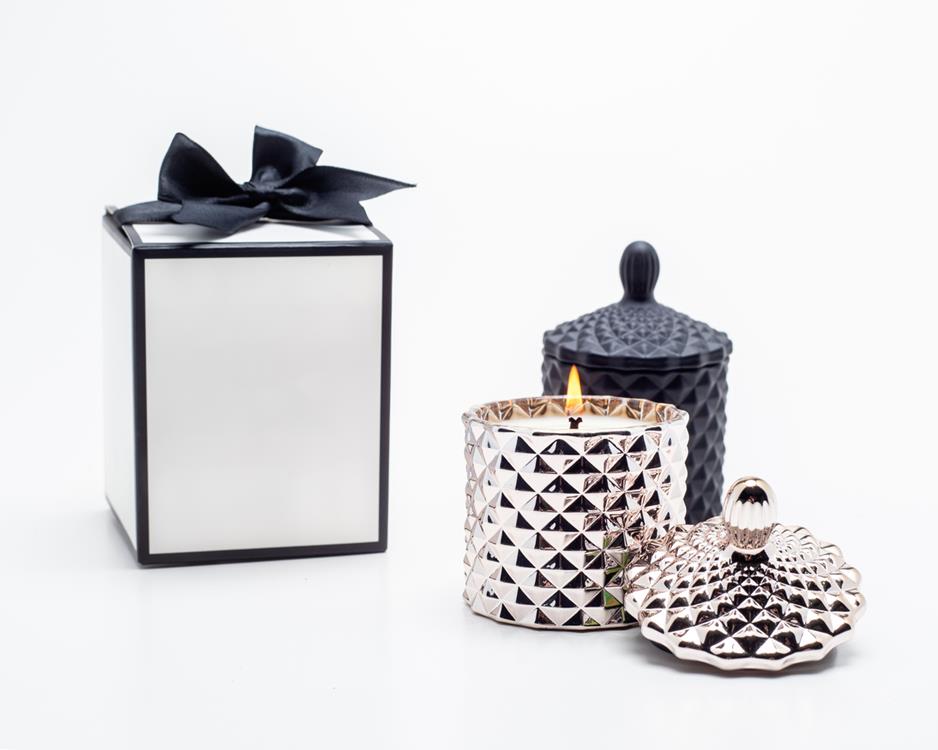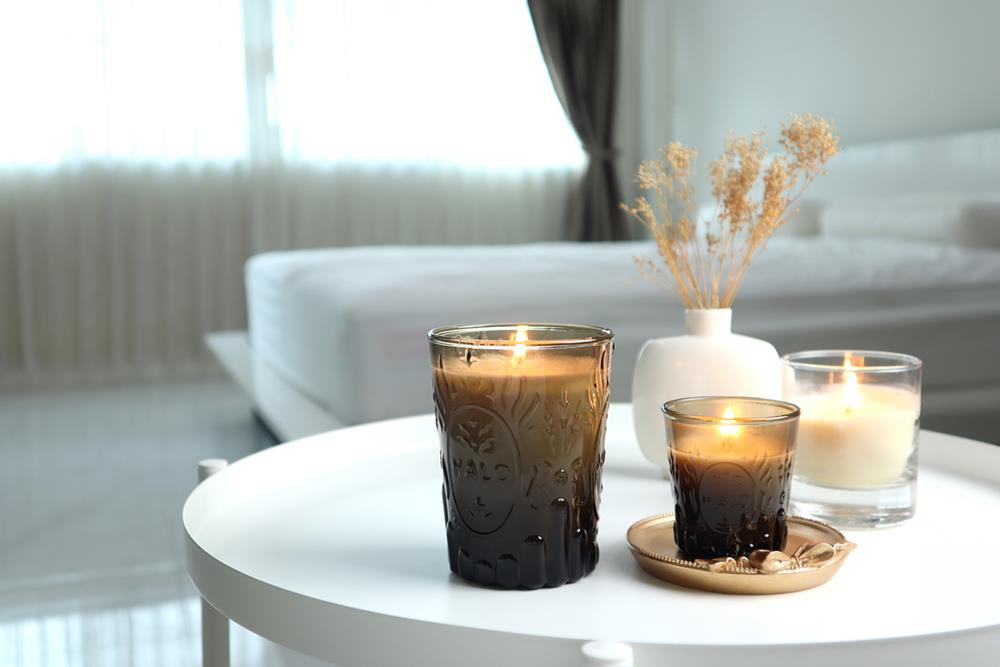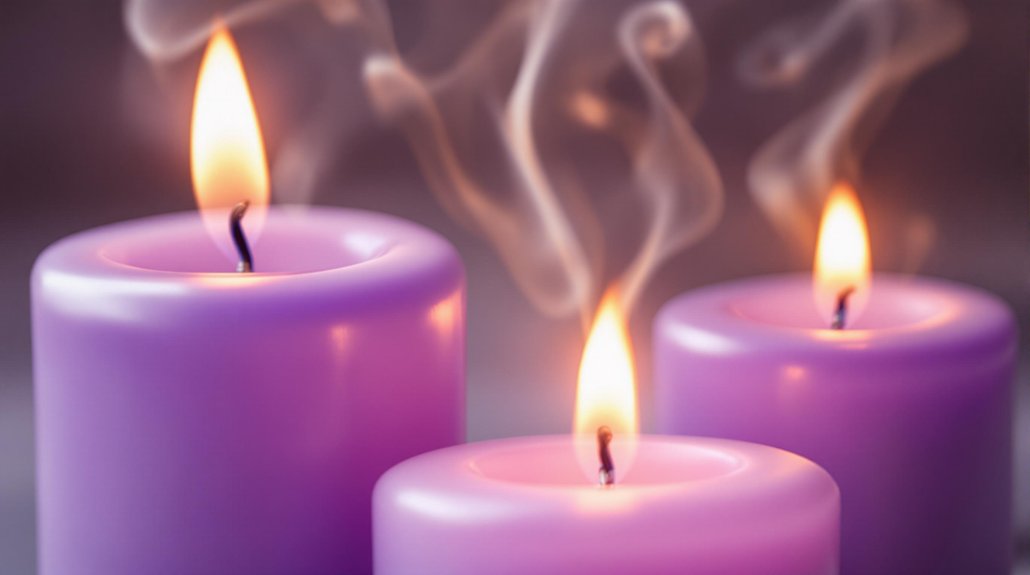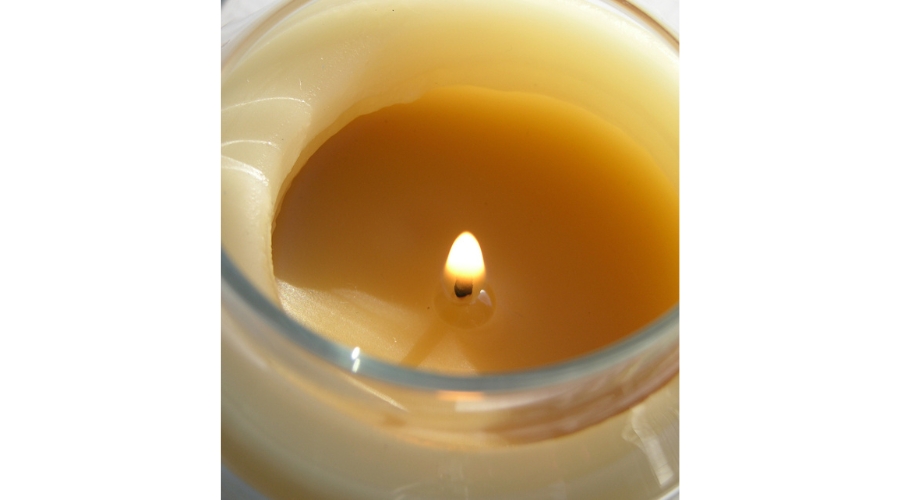How to Melt Candle Wax Safely at Home

Whether you're repurposing old candles, making your own custom scents, or crafting wax melts, knowing how to melt candle wax safely is essential. While the process is simple, doing it the wrong way can lead to burns, smoke, or even fire hazards.
In this guide, we’ll walk you through the safest methods for melting candle wax at home—from using a double boiler to tried-and-true microwave tips. You'll also learn how to choose the right tools, maintain the right temperature, and avoid common mistakes. With a little care, you can enjoy a safe and successful DIY candle project from start to finish.
| Step | Description |
|---|---|
| 1. Understand Your Wax Type | Identify the wax you’re using (paraffin, soy, or beeswax) and note its melting point. This helps avoid overheating and ensures proper handling. |
| 2. Prepare Your Workspace | Work in a well-ventilated, clutter-free area on a heat-resistant surface. Have safety gear like oven mitts and goggles ready. |
| 3. Use the Double Boiler Method | Place a heat-safe container of wax in a larger pot with 1–2 inches of simmering water. Heat slowly and stir occasionally until fully melted. |
| 4. Try Microwave Melting (Optional) | Use only microwave-safe containers. Heat in 1–2 minute intervals at medium heat, stirring in between. Ideal for soy and coconut wax; avoid using with paraffin. |
| 5. Monitor the Temperature | Use a thermometer to keep wax under 250°F (121°C). Overheating can cause smoke or fire, especially with paraffin wax. |
| 6. Handle with Care | Use oven mitts or heat-resistant gloves when moving containers. Never leave melting wax unattended. |
| 7. Reuse Melted Wax Creatively | Pour leftover wax into molds to make votive candles, wax melts, or teacup candles for creative reuse. |
| 8. Follow General Safety Tips | Keep children and pets away, avoid direct heat, use the right tools, and keep emergency items like a fire extinguisher nearby. |
Understanding Different Types of Candle Wax
Before melting candle wax at home, it’s important to understand the different types available—each has its own characteristics, melting points, and best uses.
Paraffin Wax
One of the most common types, paraffin wax is affordable and highly versatile. It melts between 46–68°C (115–154°F) and is used for a wide range of candle styles. However, it’s a petroleum-based product and not as eco-friendly as other options.Soy Wax
A popular eco-friendly choice, soy wax melts at a slightly higher temperature of 49–82°C (120–180°F). It’s made from soybean oil, is biodegradable, and burns cleaner than paraffin. Soy wax is especially well-suited for container candles.Beeswax
Known for its natural scent and long burn time, beeswax melts between 62–65°C (144–149°F). It’s ideal for a variety of candle types and is a favorite for those looking for a more natural, sustainable option.
Choosing the right wax not only affects how you melt it but also impacts the candle’s burn quality, scent throw, and environmental footprint. Knowing the proper melting points for each wax type is key to ensuring a safe and successful melting process.
Preparing Your Workspace for Wax Melting
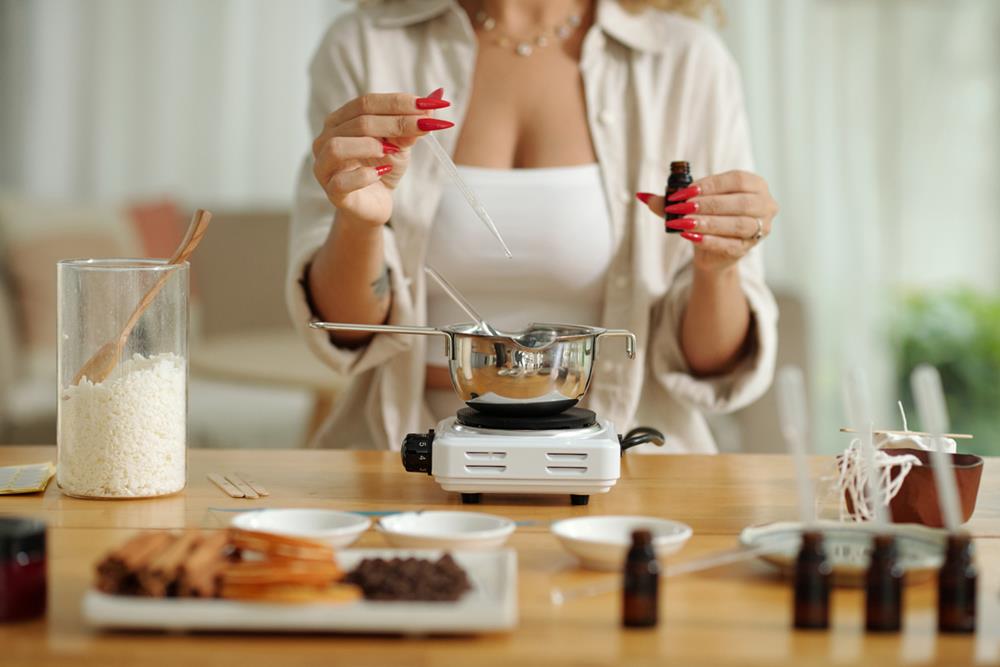
Now that you know the different types of candle wax and their melting points, it's essential to focus on preparing your workspace for wax melting.
Begin by ensuring your workspace is well-ventilated and free from clutter to minimize fire hazards. Use a heat-resistant surface like a countertop to protect against spills.
Before you start, gather all necessary materials to streamline the process. Here’s what to do:
- Double Boiler Method: Set up your double boiler, ensuring all components are ready for use.
- Protective Gear: Wear safety goggles and heat-resistant gloves to guard against hot wax splashes.
- Safety Precautions: Keep a fire extinguisher or sand nearby for emergencies.
Additionally, remember that candle safety and handling is crucial to prevent accidents while working with hot wax.
The Double Boiler Method for Wax Melting
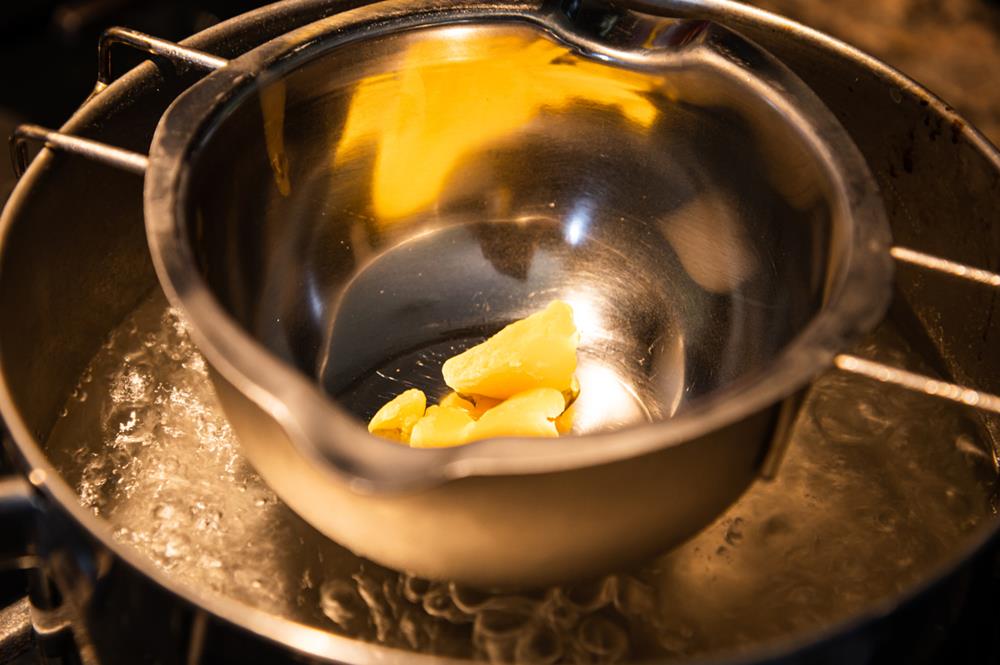
The double boiler method is one of the safest and most reliable ways to melt candle wax at home. It provides gentle, even heat and minimizes the risk of burning or overheating the wax.
To get started:
Set up your double boiler by placing a heat-safe container or smaller pot filled with wax inside a larger pot that contains about 1–2 inches of simmering water. Be sure the water level is low enough to avoid splashing into the wax.
Heat the wax slowly, keeping a close eye on the temperature. Aim to stay below 80°C (176°F) to prevent scorching or smoking.
Stir occasionally to promote even melting and prevent hot spots from forming.
Once the wax is completely melted and smooth, carefully remove the inner container using oven mitts or heat-resistant gloves to avoid burns.
This method is ideal for beginners and experienced candle makers alike. It’s simple, safe, and helps ensure your wax melts evenly—setting you up for a successful candle-making experience.
Using the Microwave to Melt Candle Wax
Although the microwave offers a quick and convenient way to melt candle wax, it's significant to follow some essential guidelines to guarantee safety and effectiveness. Initially, choose a container labeled as microwave-safe to avoid accidents during the melting process. Set your microwave to medium heat, as this prevents overheating, and use it like a wax melter for your candle making projects.
Here’s a simple process:
- Intervals: Heat the wax in 1-2 minute intervals, stirring after each one to guarantee even melting.
- Temperature: Aim for the recommended melting temperature of around 80°C.
- Cooling: Allow the wax to cool slightly before adding color or fragrance at about 70°C.
For better results, make sure to avoid drafts that can cause uneven burning and soot production when using the candles.
This method works well for soy and coconut wax but avoid using it with paraffin wax.
Safely Handling and Monitoring Wax Temperature
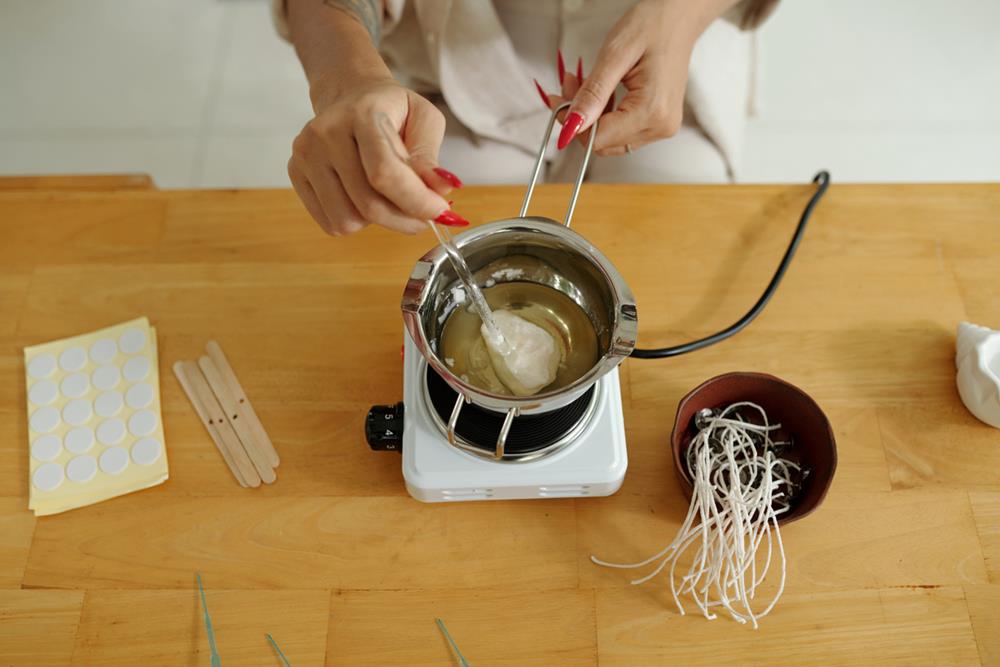
When melting candle wax, temperature control and safety are essential to avoid accidents and ensure the wax melts properly.
Use a thermometer to monitor the wax temperature consistently. Most wax types should be kept well below 250°F (121°C). Exceeding this temperature can lead to overheating or even combustion, especially with paraffin wax.
The double boiler method is ideal for safe, even heating. Just be sure to check the water level regularly—if it boils dry, the wax can overheat quickly.
Never place wax containers directly on a stovetop burner. This creates uneven heating and significantly increases the risk of fire.
Stay nearby at all times. Never leave melting wax unattended. Wax can quickly go from safe to dangerous if left unwatched.
When handling hot containers, always use potholders, oven mitts, or heat-resistant gloves to avoid burns.
By following these safety practices, you can melt wax with confidence and avoid the most common candle-making hazards.
Creative Ways to Reuse Melted Candle Wax
Once you've safely melted your candle wax, it's time to investigate imaginative ways to give it a new life.
Transform those bits of leftover wax into something delightful. Here are some creative options:
- Votive Candles: Pour melted coconut wax into new holders with a wick, creating custom-scented candles by adding your favorite fragrance oils.
- Wax Melts: Use silicone molds to shape the melted wax into wax melts. These can be placed in candle warmers to fill your home with pleasant aromas.
- Teacup Candles: Breathe new life into vintage teacups by making them into charming candle holders. Simply fill them with melted wax and a fresh wick for a unique decorative touch.
These projects offer a fun way to repurpose wax while enhancing your space.
Essential Safety Tips for Melting Wax at Home
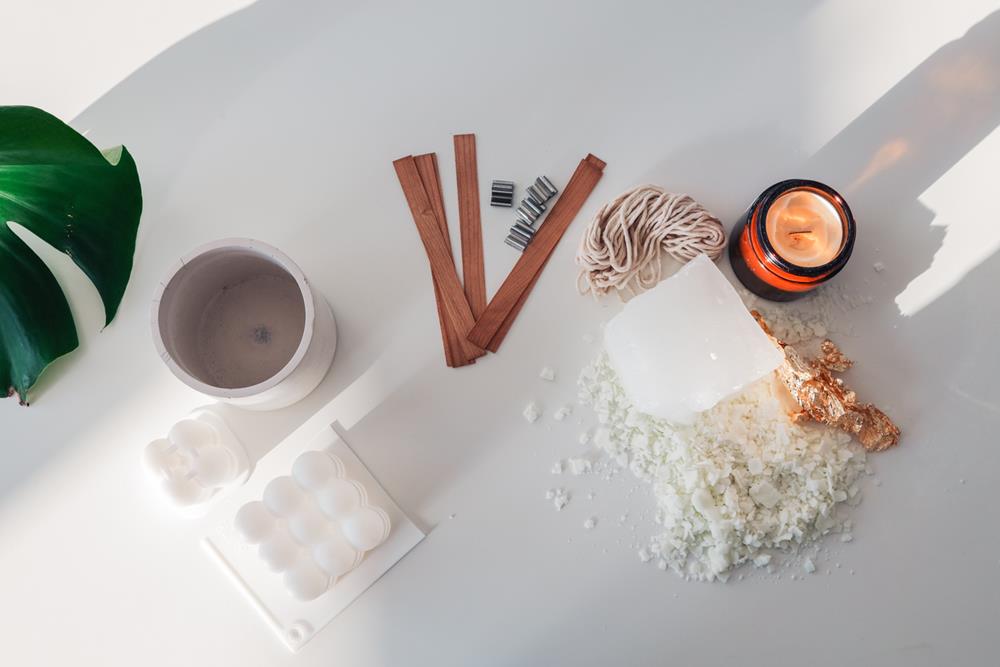
Melting wax at home can be a fun and creative process, but safety should always come first to avoid accidents and ensure a smooth experience.
Know your wax: Different types of wax (like soy, paraffin, or beeswax) have different melting points. Always check the recommended temperature range before you begin.
Use the right equipment: Stick with a double boiler or a dedicated wax melter to avoid direct heat, which can lead to scorching or fire hazards.
Monitor the temperature: Keep a thermometer on hand and make sure the wax doesn’t exceed 250°F (121°C).
Stay focused: Work in a clutter-free, distraction-free space, and never leave melting wax unattended—even for a moment.
Protect yourself: Use oven mitts or heat-resistant gloves when handling hot containers, and be cautious when transferring melted wax.
Keep kids and pets away: Hot wax can cause serious burns. Make sure your workspace is off-limits to children and animals.
By taking these precautions, you’ll create a safer environment for candle making—and enjoy the process with peace of mind.

